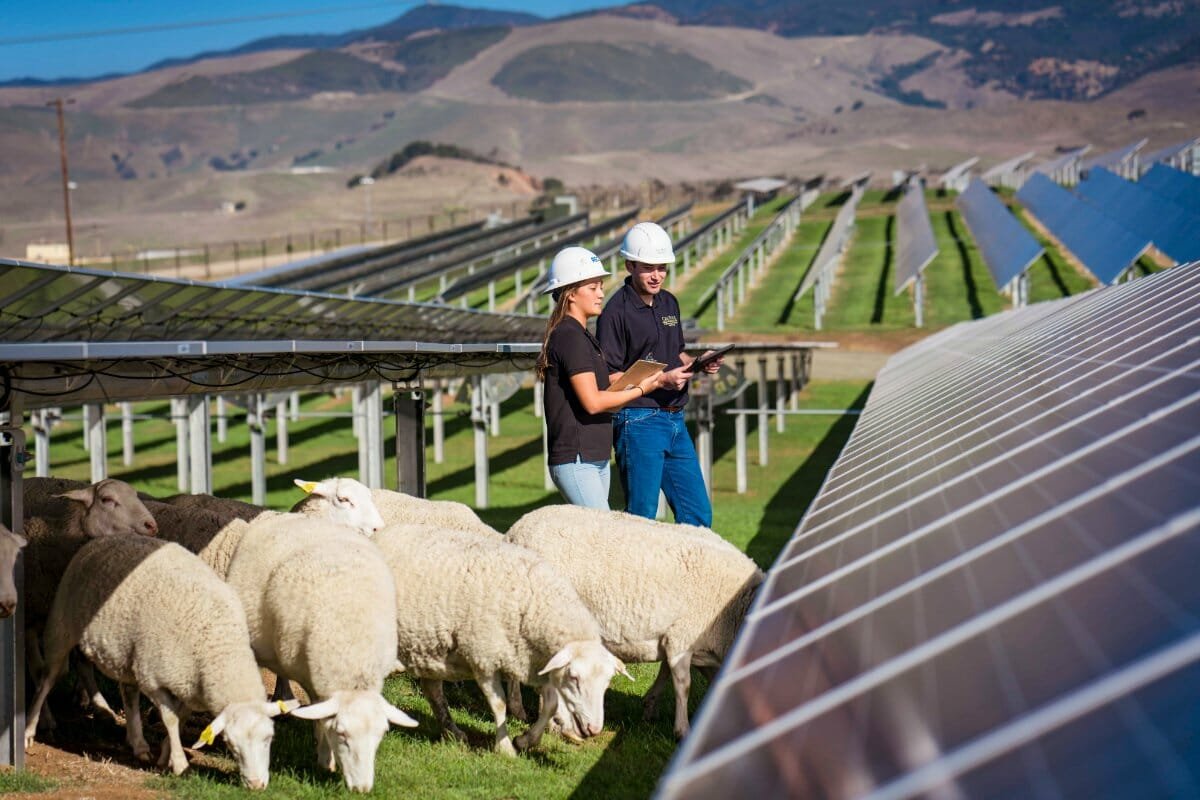As California Gets Drier, Solar Panels Could Help Farms Save Water
Agrivoltaics—or on-farm solar arrays—are still rare in California, but experts say the shade they provide could be a game-changer in a state where many farms are struggling to plan for a future with limited groundwater.
Satellite imagery of Topaz Solar Farm, a massive solar installation inland from San Luis Obispo in Central California, depicts an oasis of blue panels surrounded by sun-scorched earth. The images do not capture, however, the thousands of sheep hard at work under the panels, eating the non-native grasses and reducing the threat of wildfire.
The operation benefits everyone involved: Sheep farmer Frankie Iturriria gets paid for his time, the collaborating rangeland researchers are breaking ground, and the landowner BHE Renewables can maintain the property with sheep, which have less impact and are more cost-effective than mowers or other livestock. But the farm is one of relatively few examples of agrivoltaics—or combined agriculture and photovoltaic array systems—on private land in California, where the technology has been surprisingly slow to gain visibility and traction.
Scientists, farmers, and advocates agree that one of the biggest barriers to rolling out agrivoltaics in California—the national leader in solar energy, agricultural production, and even on-farm solar—is a need for more state-specific research. Internationally, many countries in Europe and Asia are ahead of the U.S. as far as implementation; and within the U.S., the East Coast has largely been leading the charge.
Lucy Bullock-Sieger, the vice president of strategy for Lightstar Renewables—which collaborates with groups like AFT on policy and helps lead the Coalition for Community Solar Access—said there’s significant enthusiasm for agrivoltaics in her industry, both from utility-scale and smaller-scale solar developers.
Lightstar, which uses a model where landowners receive lease payments, has agrivoltaics projects under construction throughout the country; in California, the company is waiting for the state to release its new community solar program, which will offer better solar energy rates for residents with low and moderate incomes.
“The industry is moving much faster than policy,” she said. “We’re ready, and we’re pushing the industry through policy changes, which is what is really needed next. The industry and developers are really turning to [agrivoltaics], and that has shifted a lot even in the last year.”
FULL ARTICLE HERE

